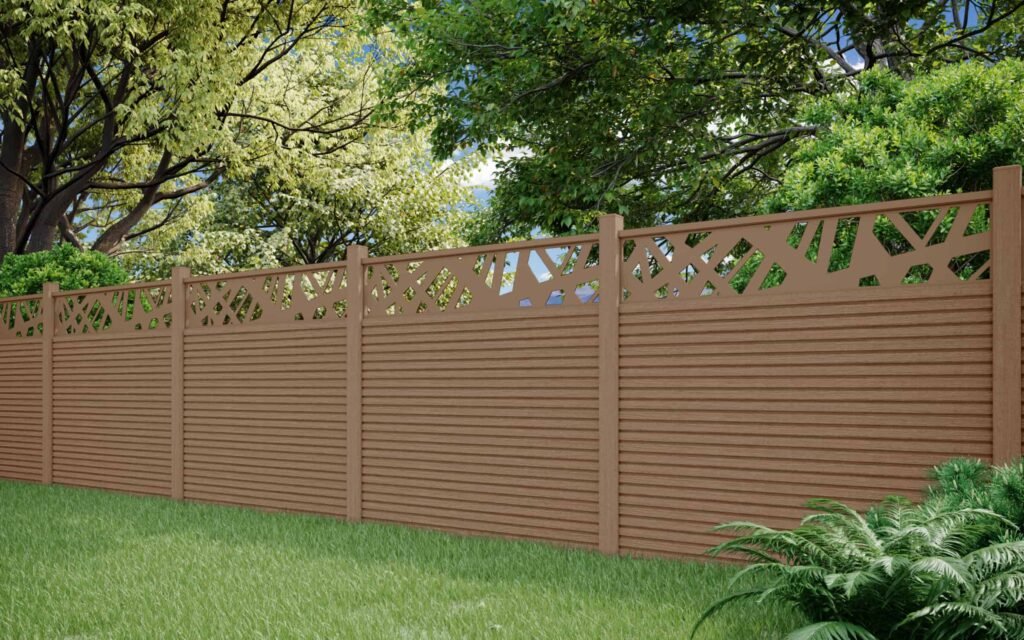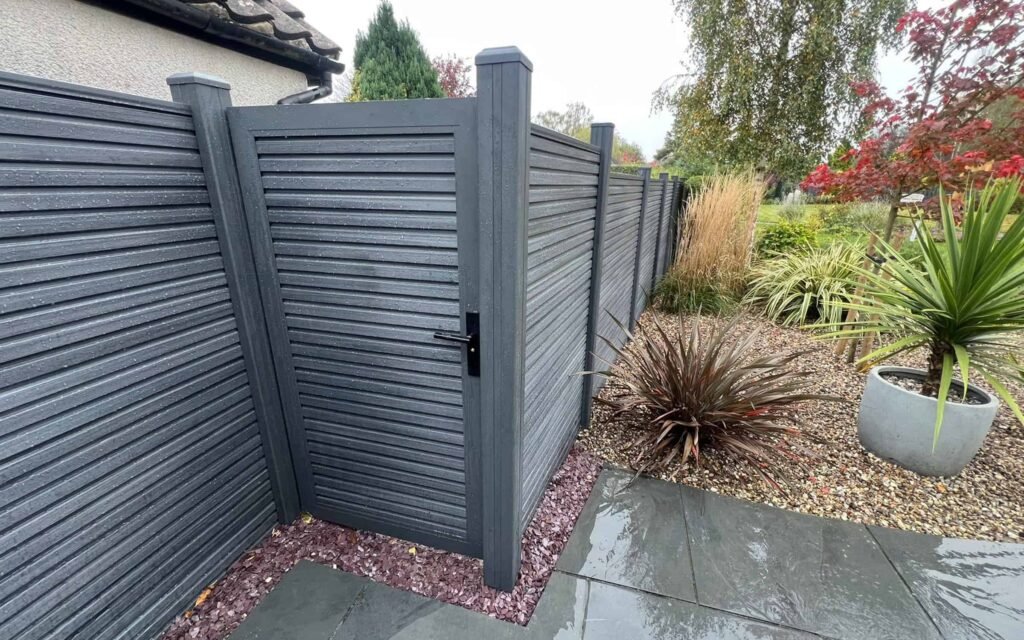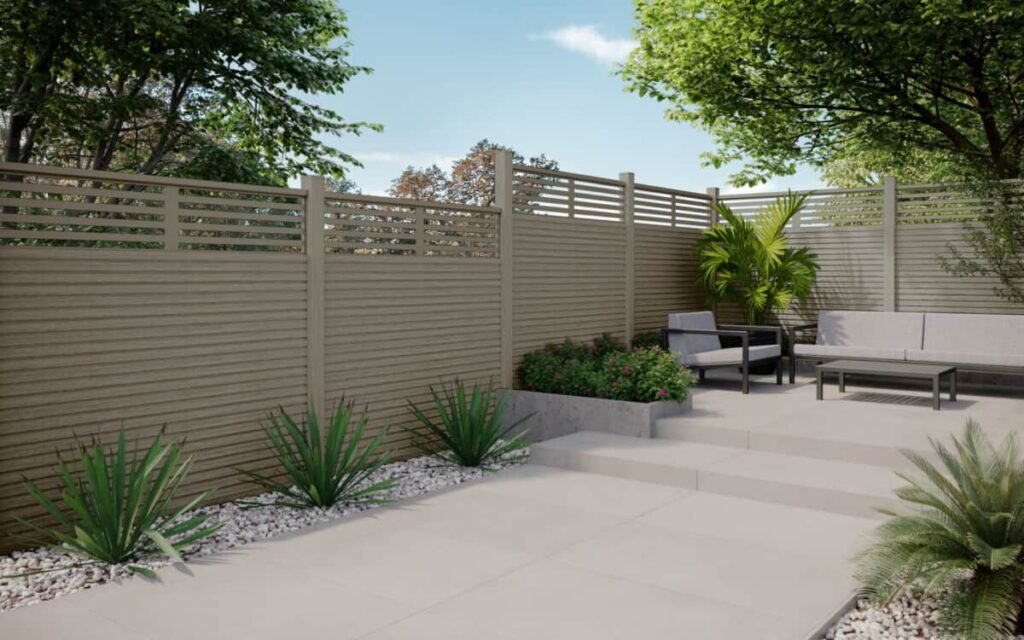How Composite Fencing Combines Durability with Low Environmental Impact
Innovative Fencing Solutions to Enhance Privacy and Aesthetics
Quick Snapshot
Discover how composite fencing is revolutionizing outdoor spaces with its unbeatable durability and eco-friendly design. By combining recycled materials with low-maintenance features, it offers a sustainable alternative to traditional fences, giving you lasting beauty while protecting the planet.
Imagine standing in your backyard on a crisp, sunny afternoon. The garden is in full bloom, and your fence, once a dull, weathered structure, now stands tall, vibrant, and resilient, an integral part of your outdoor space that doesn’t just keep the world at bay but enhances the view. This transformation is no accident. It’s the power of composite fencing, a modern marvel that combines the charm of wood with the durability of recycled plastics.
As environmental awareness continues to grow, more homeowners and businesses are turning to composite fencing, not only for its stunning appearance but for its lasting strength and minimal ecological impact. It’s a choice that marries sustainability with performance, giving you a fence that stands the test of time without costing the Earth.
Composite Fencing: A Modern Solution for Lasting Fences
Composite fencing combines natural wood fibers and recycled plastics to create a highly durable and sustainable material. This blend provides the aesthetic appeal of wood while enhancing performance by offering superior resistance to moisture, UV radiation, and insects. The manufacturing process of composite fencing significantly reduces the need for traditional timber, making it an eco-friendly alternative that helps conserve forests and natural resources. Its longevity ensures that homeowners experience minimal maintenance, making it a cost-effective and environmentally responsible choice.
The demand for sustainable and long-lasting building materials has driven the popularity of composite fencing. As awareness of environmental impacts grows, consumers seek alternatives that combine aesthetics with durability and eco-consciousness. Composite fencing answers this need by providing a solution that minimizes the environmental footprint without compromising on functionality. Its resilience against harsh weather conditions and pests makes it an ideal choice for both commercial and residential properties
Creating Harmony Between Privacy Needs and Visual Appeal
When selecting a fence, the balance between privacy and aesthetics is a major issue. Although homeowners require privacy, they should not sacrifice the aesthetics of a property. Good fencing mixes the two to have a comfortable, secluded space without compromising the aesthetic feel of the house. The fence must intertwine with the landscape around it without neglecting the aspect of privacy. When you concentrate on the right design and materials, it is possible to have a fence that will be a source of protection, beauty, and increase the sales price of your home.
Choosing the right design might make a significant difference to the overall balance of your outdoor area. As an example, in an urban location, solid panels may offer total privacy but without seeming too coarse or staid. A contemporary form of solid fencing has the advantage of clean lines and smooth finishes, which makes it more polished and provides an improved look that suits high population areas, where the primary concern is to provide privacy. These designs can combine with modern architecture to boost the curb appeal of the property.
In a more rural or low-density suburban context, a semi-private fence can represent the compromise between the two worlds. These fences usually combine solid sections with gaps or slats, which allow plenty of natural light and air to circulate freely. The design will have some privacy without the closed-in effect often characteristic of solid barriers. These solutions make the outdoor environment welcoming while providing a sense of privacy and connection with the external environment.
What is Composite Fencing Made Of?
Composite fencing consists of a blend of materials chosen to ensure both sustainability and durability. The components, wood fibers, recycled plastics, and additives, work together to provide strength, weather resistance, and an eco-friendly alternative to traditional fencing.
Wood fibers originate from renewable sources like sawdust, wood chips, and reclaimed wood. These fibers offer a natural, wood-like appearance and texture, allowing composite fencing to mimic traditional wood. By utilizing these sustainable materials, composite fences reduce the need for virgin timber, contributing to the conservation of forests.
Recycled plastics play a significant role in composite fencing by binding the wood fibers. Common plastics such as polyethylene and polypropylene, often sourced from post-consumer items like bottles and bags, provide additional strength and resilience. This process reduces the accumulation of plastic waste, contributing to a cleaner environment and supporting recycling efforts.
Additives enhance the composite’s performance by protecting against weathering, mold, and UV degradation. These coatings ensure the longevity of the fence, maintaining its color and structural integrity over time. The integration of these additives ensures that composite fencing remains low-maintenance and highly durable in varying climates.
The combination of these materials results in a product that mimics the appearance of wood but is far more resistant to environmental factors like moisture and pests. These attributes are highly desired by home buyers.

Durability: How Composite Fencing Stands the Test of Time
Composite fencing stands out for its long-lasting durability, especially when compared to traditional wood materials. Unlike wood, which requires regular maintenance such as painting, sealing, and treating for pests, composite fences are engineered to endure without the need for frequent upkeep. This makes composite fencing ideal for homeowners seeking a hassle-free, reliable fencing option over time.
One of the key advantages of composite fencing is its resilience in diverse climates. While wood fences are prone to damage in areas with high humidity or extreme heat, composite fencing maintains its strength and appearance regardless of the weather. In regions that experience freezing winters or intense summer heat, composite material remains unaffected by moisture absorption or sun-induced cracking, unlike wood, which warps or splinters in these conditions. The ability to withstand such temperature fluctuations enhances the lifespan of composite fences.
Moreover, composite fencing’s ability to resist physical damage offers an edge over traditional wood. Unlike wood, which can be easily scratched, dented, or cracked from impact, composite material is far more resistant to these physical stresses. This makes composite fencing an excellent choice for areas exposed to high traffic, such as around sports fields, parks, or residential backyards with active children or pets. Even in high-wind environments, composite fences remain intact, providing continuous protection and aesthetic appeal.
Environmental Impact: Traditional Fencing Materials vs. Composite Fencing
Environmental Issues in Fencing: Traditional fencing materials, such as wood and vinyl, pose significant environmental challenges. The demand for wood leads to deforestation, which disrupts ecosystems, reduces biodiversity, and contributes to carbon emissions. Vinyl fencing, made from petroleum-based PVC, is non-biodegradable and adds to plastic waste in landfills, further exacerbating environmental harm.
Impact of Traditional Materials: Wood fences, though aesthetically pleasing, are a leading cause of deforestation. Unsustainable harvesting of timber often leads to habitat destruction and increased greenhouse gas emissions. Furthermore, wood fences require frequent chemical treatments for protection against pests and decay, which pollute the surrounding environment. Vinyl fencing, while durable, has a large carbon footprint due to the energy-intensive process of producing PVC. Additionally, when it reaches the end of its life cycle, vinyl fencing contributes to plastic waste that is difficult to recycle.
Composite Fencing as a Solution: Composite fencing offers an eco-friendly alternative by using recycled wood fibers and plastics. By repurposing materials that would otherwise end up in landfills, composite fencing reduces the need for new resources, lowering the environmental impact. This recycling process helps to conserve forests, reduce plastic waste, and decrease carbon emissions.
Comparative Benefits: Composite fencing stands out as a more sustainable choice, offering significant environmental advantages over traditional materials. It not only reduces waste but also minimizes the carbon footprint, making it a responsible option for eco-conscious homeowners. The composite fence will also add value and desirability when it comes time to sell your home.
How Composite Fencing Contributes to Sustainable Living
Sustainable living prioritizes choices that minimize environmental harm while improving quality of life. Composite fencing contributes significantly to this lifestyle by offering an eco-friendly alternative to traditional wood fences. Made from recycled wood fibers and plastics, composite fences help reduce the reliance on virgin materials, which helps conserve natural resources and curtails deforestation. Homeowners who opt for composite fencing can make a direct, positive impact on the environment while still enjoying a high-quality, durable fence.
Another key factor in promoting sustainability is the reduced need for maintenance. Traditional wood fences require regular treatments with chemicals, such as sealants, paints, and preservatives, which often contain harmful substances. In contrast, composite fencing requires little upkeep, as it does not need staining or painting to maintain its appearance. This results in fewer chemicals entering the environment and reduces the frequency of material replacement, making it a more sustainable choice.
Moreover, the long lifespan of composite fencing reduces the demand for replacement materials. Wood fences typically need replacing every 10-15 years due to issues like rotting and pest damage. Composite fencing, however, is highly resistant to such problems and can last decades without the need for replacement. This longevity reduces waste and helps conserve resources by minimizing the need for new fencing materials.
Energy Efficiency and Reduced Carbon Footprint
Composite fencing helps improve energy efficiency by utilizing recycled materials, which require less energy to process compared to manufacturing new raw materials. Sourcing recycled wood fibers and plastics from post-consumer products significantly lowers the energy consumption involved in raw material extraction and production. This process conserves resources and reduces the overall environmental impact, making composite fencing a more energy-efficient alternative to traditional fencing options.
Composite fencing also contributes to a reduced carbon footprint. Since it requires fewer repairs and replacements over time, composite fencing reduces the demand for transportation, manufacturing, and disposal of materials. In areas prone to harsh weather conditions, composite fences maintain their integrity for decades, cutting down on waste and further reducing the carbon footprint associated with fence replacement. This durability makes composite fencing a smart, sustainable choice for those looking to minimize their environmental impact. It is also a smart investment that may increase the value of your home.
Composite Fencing and Waste Reduction
Composite fencing significantly contributes to waste reduction by incorporating recycled materials, such as wood fibers and plastics, which would otherwise end up in landfills. By reusing these materials, manufacturers help decrease the amount of waste generated, promoting a more circular economy. This process not only conserves valuable resources but also prevents harmful waste from accumulating in the environment.
At the end of its lifespan, composite fencing can also be recycled, further reducing its environmental footprint. Although recycling composite materials is more complex than traditional materials like wood or metal, ongoing advancements in recycling technology are improving the efficiency of this process. Efforts to develop specialized programs for composite material recycling are making it easier to keep these products out of landfills, offering an even more sustainable option for homeowners looking to minimize their environmental impact.

Cost-Effectiveness of Composite Fencing Over Time
While the upfront cost of composite fencing may exceed that of traditional wood or vinyl options, its long-term cost savings are substantial. Composite fences require minimal upkeep, eliminating the recurring expenses of painting, sealing, or replacing weather-damaged boards. Homeowners save significantly on maintenance materials and labor, as composite fences resist common issues like rot and insect damage, which plague wood fences.
Moreover, composite fencing’s extended lifespan means fewer replacements are necessary over time. Traditional wood fences may need replacing every 10 to 15 years, leading to significant long-term costs. In contrast, composite fences can last up to 25 years or more without the need for replacement. By investing in a composite fence, homeowners can avoid the recurring costs associated with fence repairs or replacements, ultimately making it a more cost-effective solution when considering the total cost of ownership over the fence’s lifetime.
Composite Fencing vs. Other Eco-friendly Materials
Composite fencing offers a distinct environmental edge over bamboo, often touted as an eco-friendly option. While bamboo is renewable and fast-growing, it requires considerable resources for harvesting, transportation, and processing. Additionally, its shorter lifespan compared to composite fencing requires more frequent replacement, undermining its sustainability advantages.
Recycled metal is another popular choice for eco-conscious homeowners. While metal fences are durable and recyclable, they tend to corrode over time, especially in coastal or humid areas. The production process for recycled metal also consumes significant energy, which can offset some of the environmental benefits. Despite its recyclability, the need for energy-intensive manufacturing processes and the potential for rusting can make it less sustainable than composite fencing.
In comparison, composite fencing excels by combining the best of sustainability, durability, and low maintenance. Its use of recycled materials, resistance to weathering, and long lifespan make it a more efficient and environmentally friendly option. With minimal need for repairs or replacements, composite fencing offers homeowners an eco-friendly solution that withstands the test of time while reducing long-term environmental impact.
Conclusion: Why Composite Fencing is the Future of Sustainable Fencing Solutions
Composite fencing is reshaping outdoor spaces with its innovative approach to durability, low maintenance, and environmental responsibility. By combining recycled materials with energy-efficient manufacturing, it offers homeowners a way to reduce their environmental footprint without sacrificing quality or style.
Beyond its practicality, composite fencing delivers long-term value. Its extended lifespan conserves resources, minimizes waste, and makes it a smart choice for eco-conscious households that view sustainability as an investment in both their property and the planet.
In an era where sustainability matters more than ever, opting for composite fencing isn’t just about building a boundary; it’s about making a positive impact. Don’t settle for ordinary; choose a fence that stands firm, protects your space, and contributes to a cleaner, more sustainable world for generations to come!
How Composite Fencing Combines Durability with Low Environmental Impact | OutFactors – Dallas Fort Worth, TX




